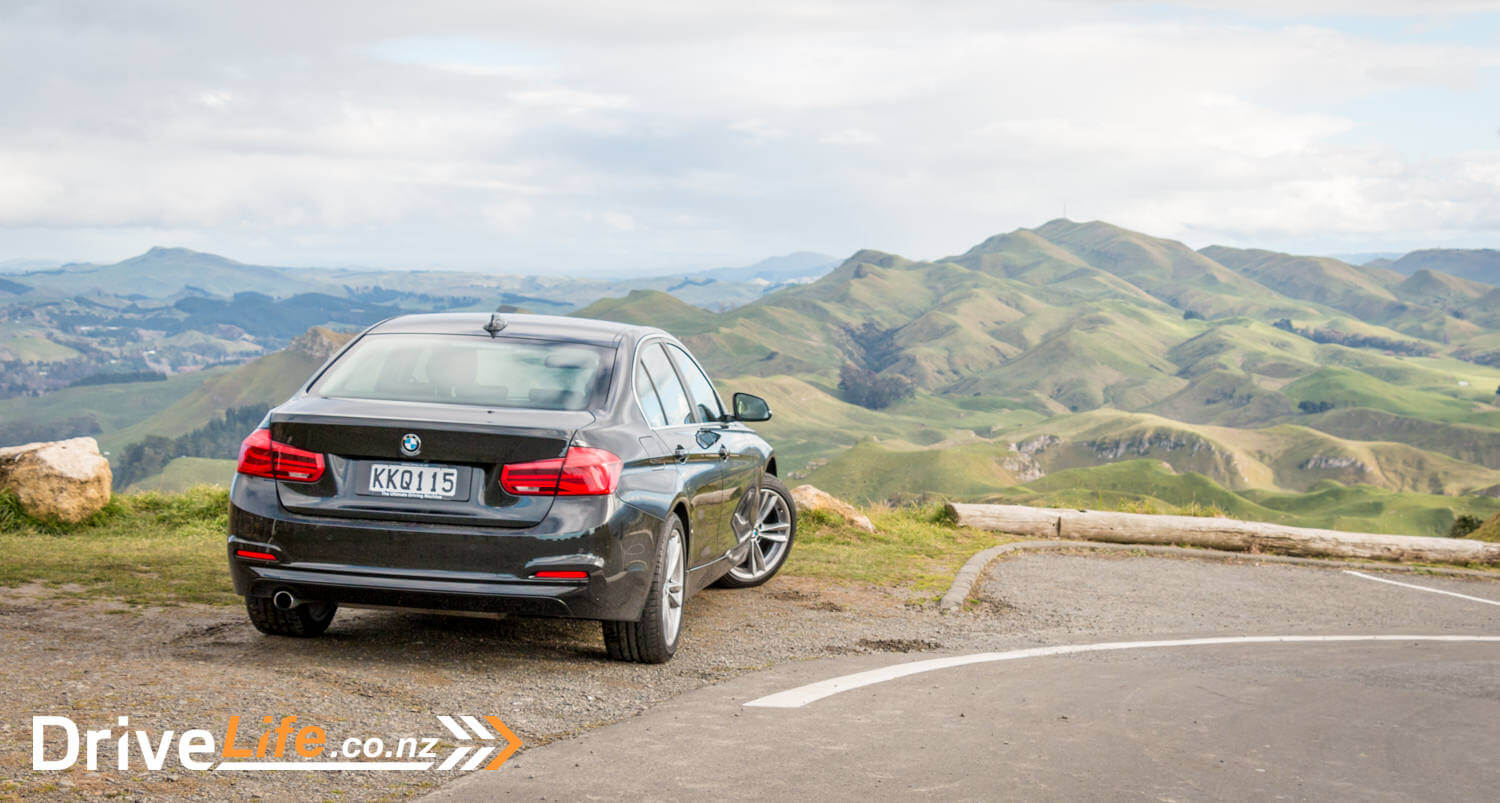Back in late 2015 I was invited to the launch of the 3 Series LCI – the facelifted version of the sixth-generation F30. I was very impressed with the cars, naming the 3 series as my favourite car of the year. One of the comments I made at the time was about the cost. They’re great, but as premium cars they’re out of reach for a lot of people.
Well, BMW have done something to address this by introducing an entry-level car. I tested the new 318i for a week to see how it performed in daily life.
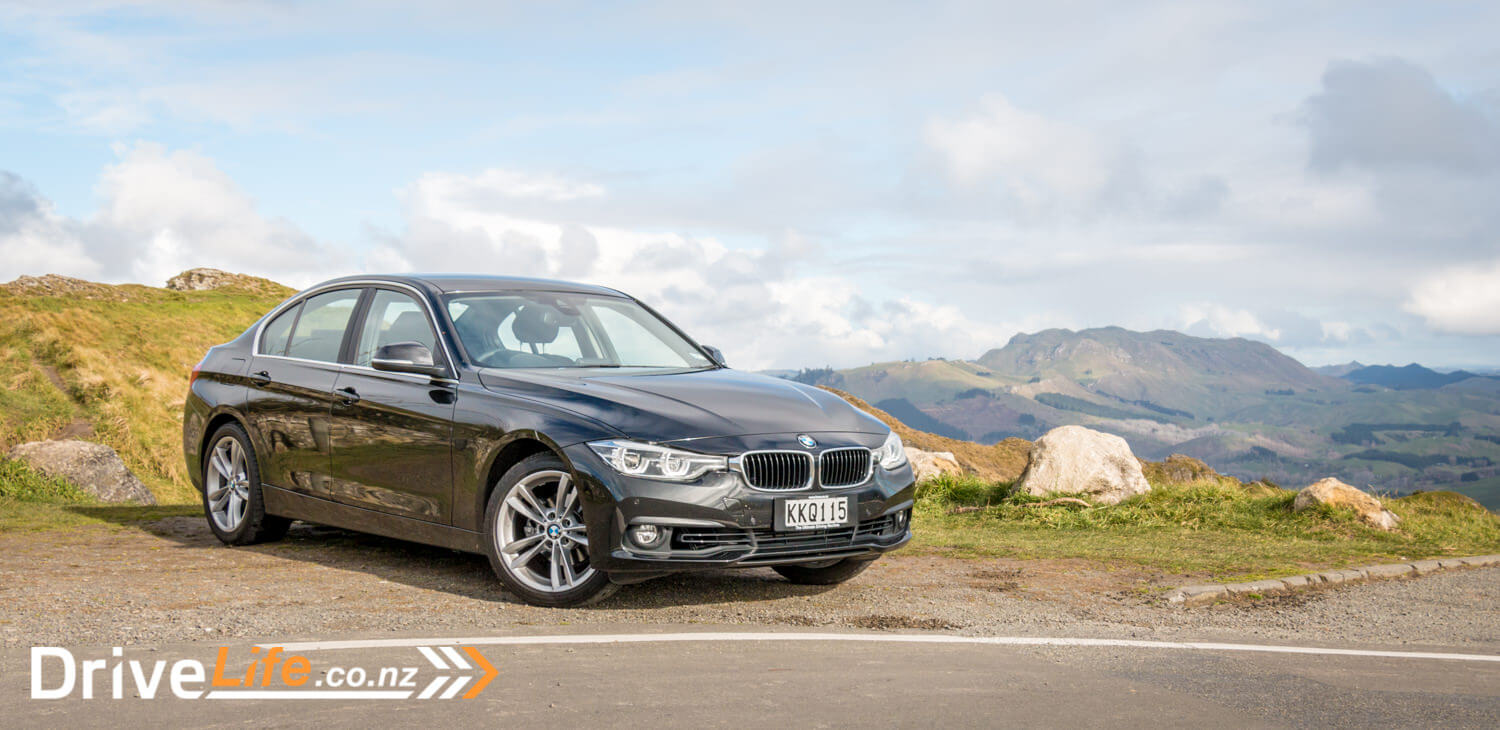
The Range
The 318i is the entry-level model, priced at $59,900. Power is provided by a 3-cylinder 1.5l turbocharged engine making 100kW and 220Nm. Connecting this to the rear wheels is BMW’s excellent 8 speed Steptronic automatic transmission.
This may be the base model but it’s not short on features. There’s keyless entry and start, 18” alloys, electric mirrors, auto dimming rear view mirror, LED headlights, fog lights and rear lights, auto lights and wipers, cruise control, front and rear parking sensors, 2-zone climate AC, electric and heated front seats. Safety kit includes DSC, ABS, Brake Assist, Cornering Brake Control, Dynamic Traction Control, six airbags, and Lane Change Assist.
BMW ConnectedDrive is included which gives you concierge services, real time traffic information, remote services, Intelligent Emergency Call, even a phone app which can control certain car features.
Colour choices are limited though – only Mineral White and Black Sapphire are available.
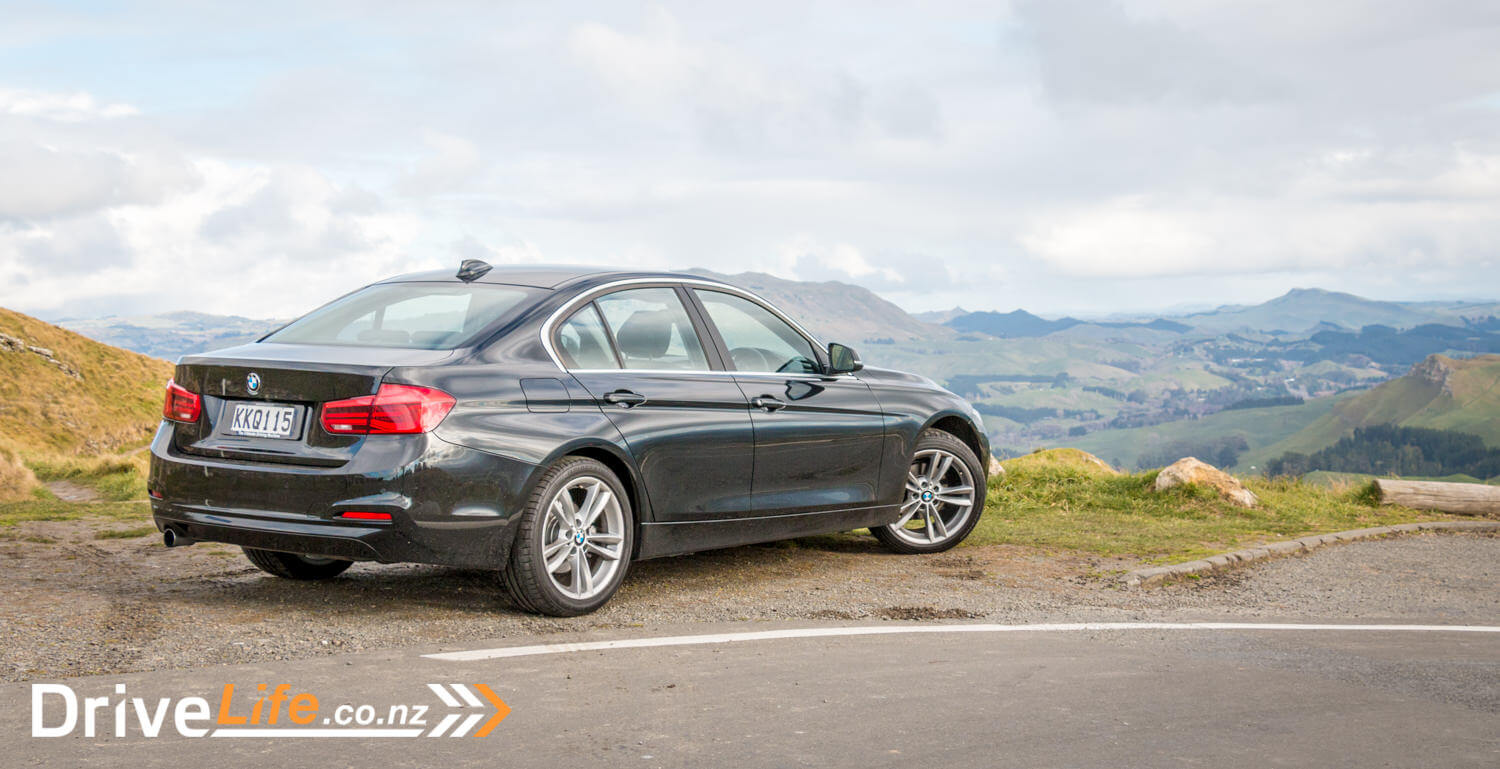
First Impressions
I’ve always liked the looks of the F30 3 Series; it’s a handsome looking car, and black really suits it. The chrome trim on the outside is kept to a minimum, with just the grille outline and a trim around the windows. It’s understated, and I like that. There’s no 318 badging, and with those double 5-spoke 18” alloys no-one will know whether you’re in a 318 or a 330.

The Inside
Inside is a similar story – nothing too flashy, quite understated, but everything nicely designed and put together. The seats are trimmed in Sensatech – BMW’s synthetic leather/vinyl material – and they are comfortable, with a decent amount of side support. The fronts are both electrically adjusted, with two memory settings on the driver’s side. The front seats are also heated.
The steering wheel adjusts for reach and height, and is trimmed in a similar material to the seats. It feels a little plasticky, but it’s nicely shaped and the material grips well. There are thumb buttons for cruise control to the left, stereo volume and phone to the right. There are no one-press buttons to change track though, you either jog then click a wheel, or use the buttons on the central dash.
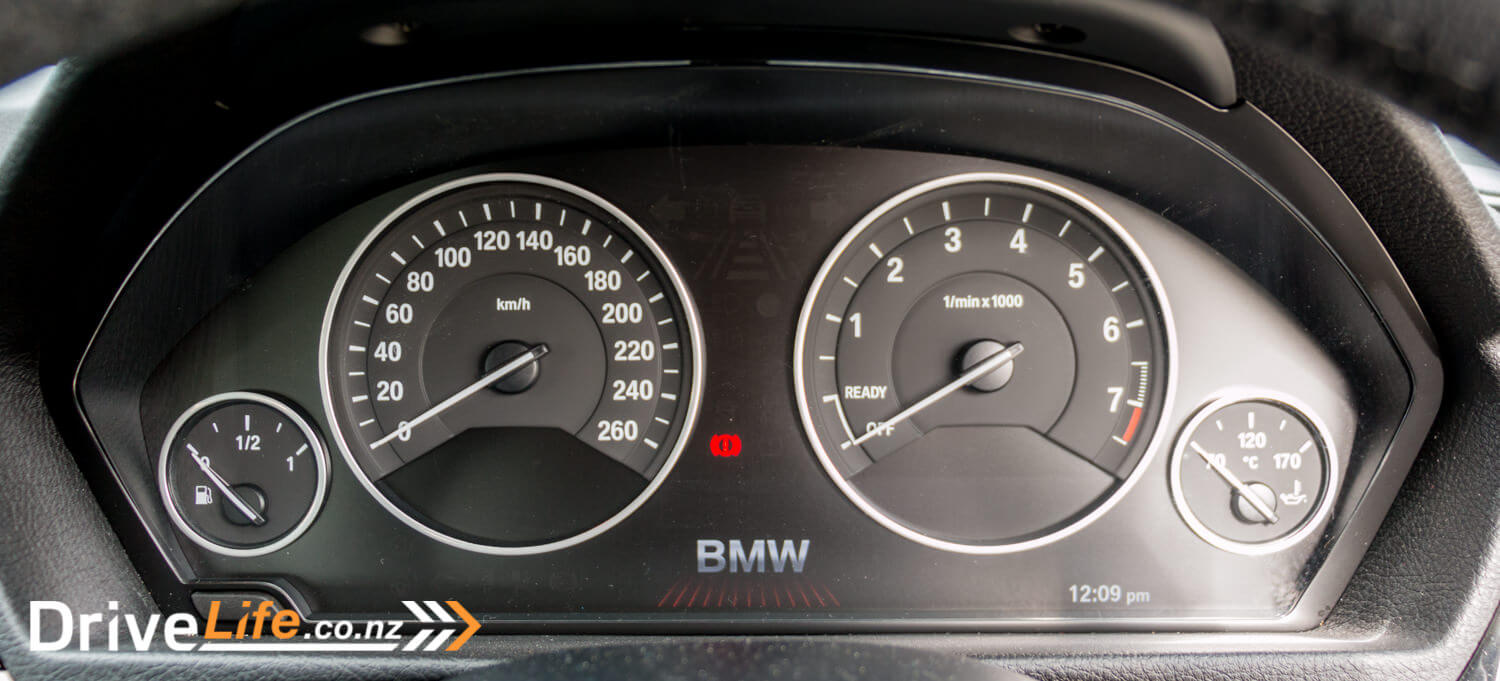
The instrument cluster is classic BMW. Two large analogue dials for speedo and rev counter with smaller fuel and temperature gauges. The bottom third of the rev counter is a digital section and there’s a wide colour LCD strip across the bottom. It’s definitely one of the best, clearest analogue dashes I’ve used. I love the way it’s all so well integrated, with the digital numbers perfectly matching the white dials, but at night the whole thing illuminates in a soft orange.
The 6.5” central screen sticks up out of the dash as a separate piece rather than being integrated in. It makes sense though – it’s not a touch screen so you don’t need to reach it, and it sits nicely at eye level. It does tend to collect dust though, as does the piano-black interior trim. I do like the way they’ve styled the dash behind it with a nice curved indent. The main screen is controlled by the usual BMW iDrive click/jog controller behind the gear shifter. There are buttons for the main functions, or you can click through the menus using the wheel. It’s a bit clunky at first but you soon get used to it.
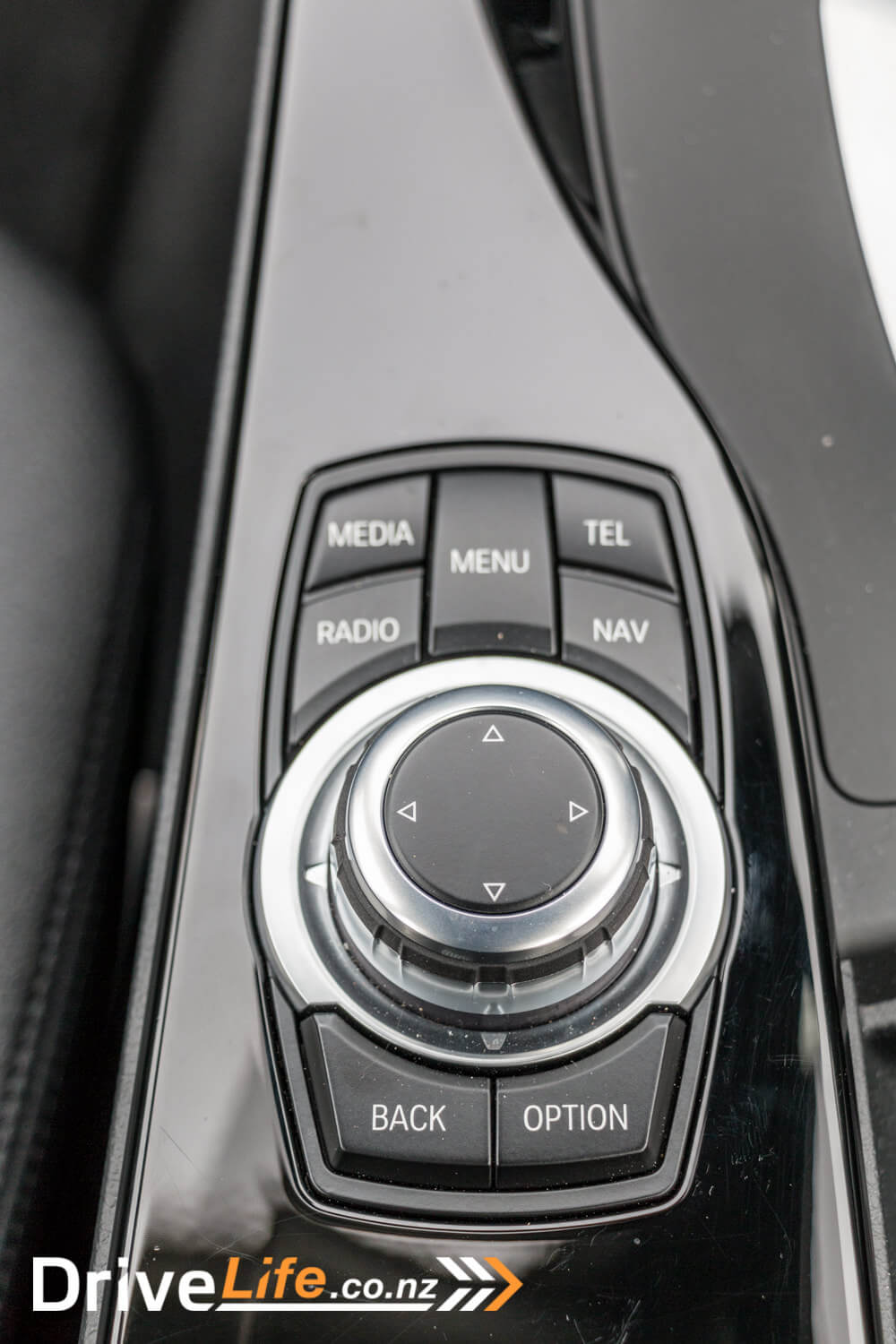
The boot – which can be popped open with a button on the remote – gives a generous 480 litres of space, with luggage tie-downs to help you stop things sliding around. There’s a cubby at each side, with one side taken up by the first aid kit and factory toolkit. Lift the boot floor and there’s another storage area below. No spare though as this car has run-flat tyres. A nice little touch is that there are magnets in the lift-up floor which lock the cover in place against the top of the boot allowing easier loading. The rear seat backs are split 40/20/40 and can be folded flat, and there is also a ski hatch behind the centre armrest for longer items, like skis for example.
There’s good legroom in the back seat and it’s comfortable. For temperature control, rear passengers have their own vent in the centre which can be adjusted from hot to cold with a knob.
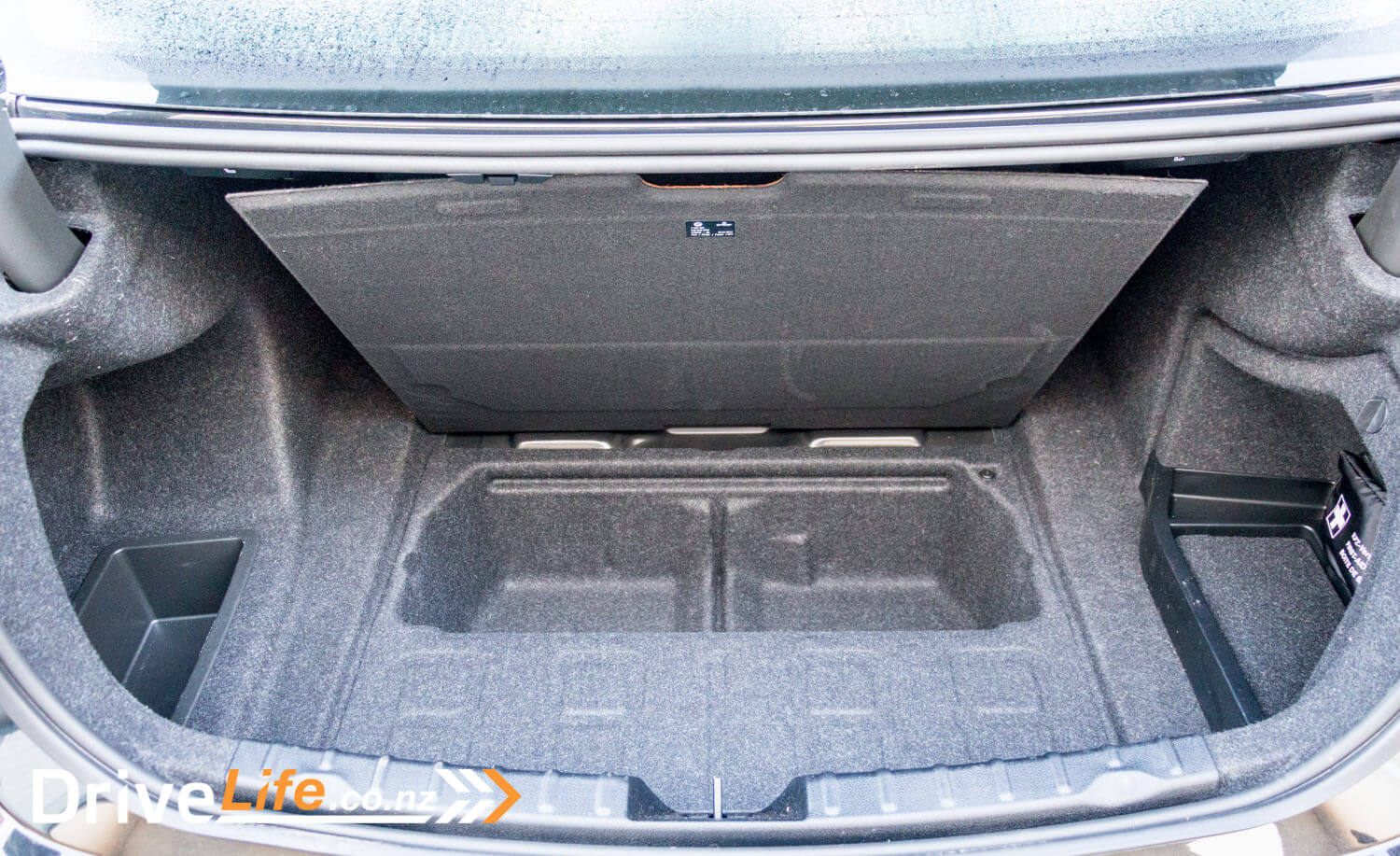
The Drive
One of the first things that becomes obvious when switching from most other cars to a BMW is the steering. Because they’re rear wheel drive, the steering feels more direct and pointy. The 3 series has electric power steering, but it’s so satisfying to use, as is that feeling of being pushed, rather than pulled out of corners. The 3 cylinder engine may only have 100kW but it’s enough to make the 318 feel pretty nippy around town. There’s a really nice 3-cylinder growl when you’re accelerating, and if you listen closely, a muted “pshhh” as you lift off the throttle.
The ride quality is excellent – not too firm, and bumps are well damped, but there’s very minimal lean on corners, making the 3 series a pleasure to chuck around on a twisty road. Win-win!
After a few days of using the BMW for the school run it was time for a proper drive. I had a box of 80s car parts to collect from someone in Hawkes Bay, so that was as good an excuse as I needed for a family road trip from Wellington.
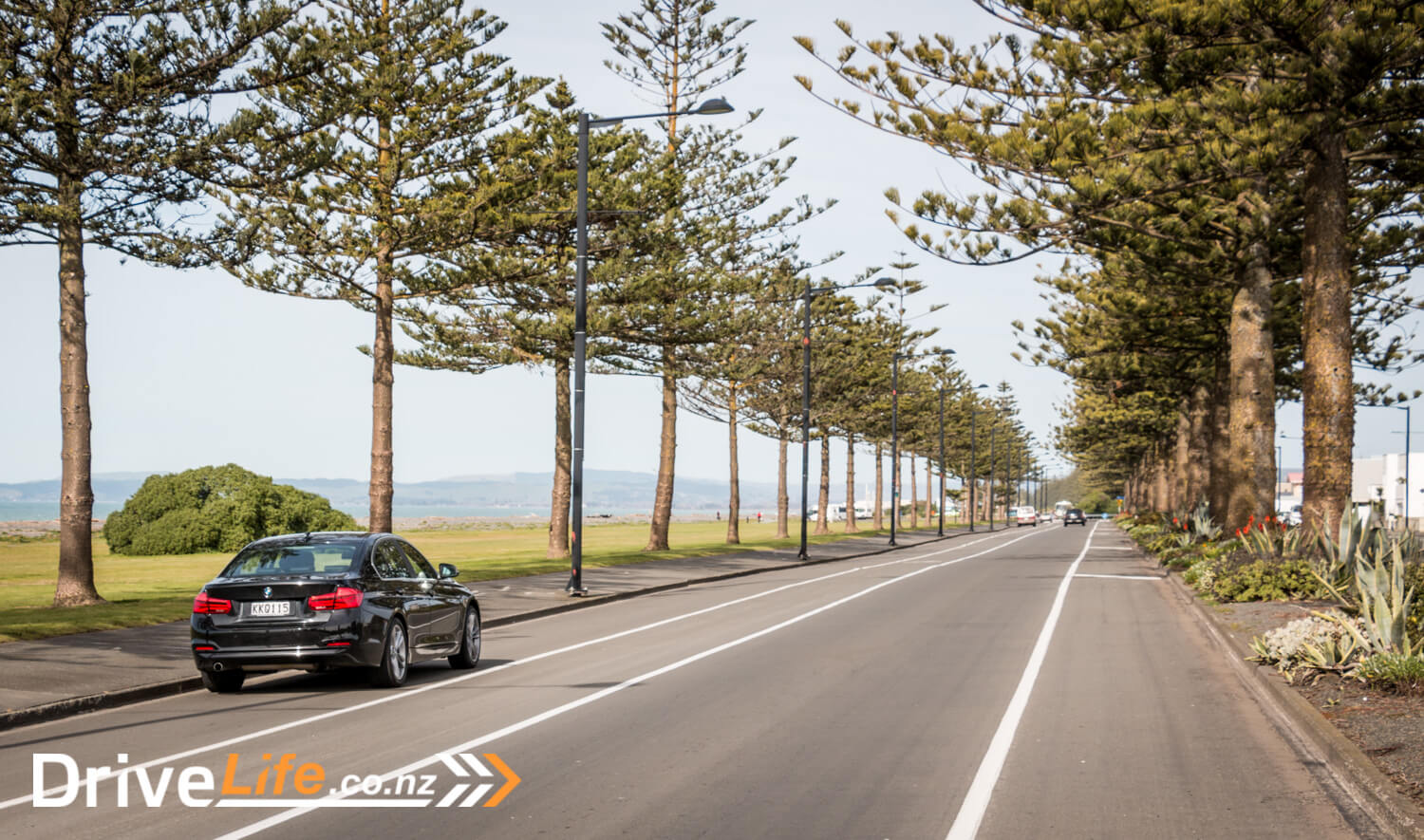
On long trips I tend to use cruise control a lot. On the main highways I think it makes for a much more relaxing journey, knowing you don’t have to keep watching your speed constantly. The 318 doesn’t have radar cruise, but it does have the best non-radar cruise I’ve used. It’s easy to set, and easy to modify your speed up and down with the thumb control. The set speed is shown on the digital display and with a small light on the edge of the speedo, which is green when cruise is active, and amber when it’s inactive but still has a speed set. Down hills it uses the brakes to accurately maintain the set speed at all times.
I’m a fan of BMW’s 8-speed transmission having experienced it in the 3 series, 1 series and the MINI. And it doesn’t disappoint here either. Most of the time, shifts are barely perceptible, with the exception of downshifts when going up hills. There aren’t any flappy paddles in the 318 but you can shift manually using the gear shifter if you want to. I never bothered as auto mode worked well for me. There were a couple of steeper, more twisty bits of road where I changed the drive mode from Comfort to Sport, which makes the throttle a bit more responsive and gears are held longer. There are times in Comfort mode when the 318 can feel under-powered, because it keeps having to shift down to find the power you’re asking for. The third mode – Eco Pro – is intended for more efficient driving, but it makes the throttle very squashy and unresponsive and I found it frustrating to drive in that mode. With the car in Comfort mode most of the time we managed 7.0l/100km, which isn’t far off the quoted 5.4l/100km.
We made a lunch stop after a couple of hundred kilometres, and by that point I was wishing that the 318 had adjustable lumbar support. The seats are comfortable but after a while I started to feel like I wanted a bit more – though I didn’t notice the same on the way back the next day.
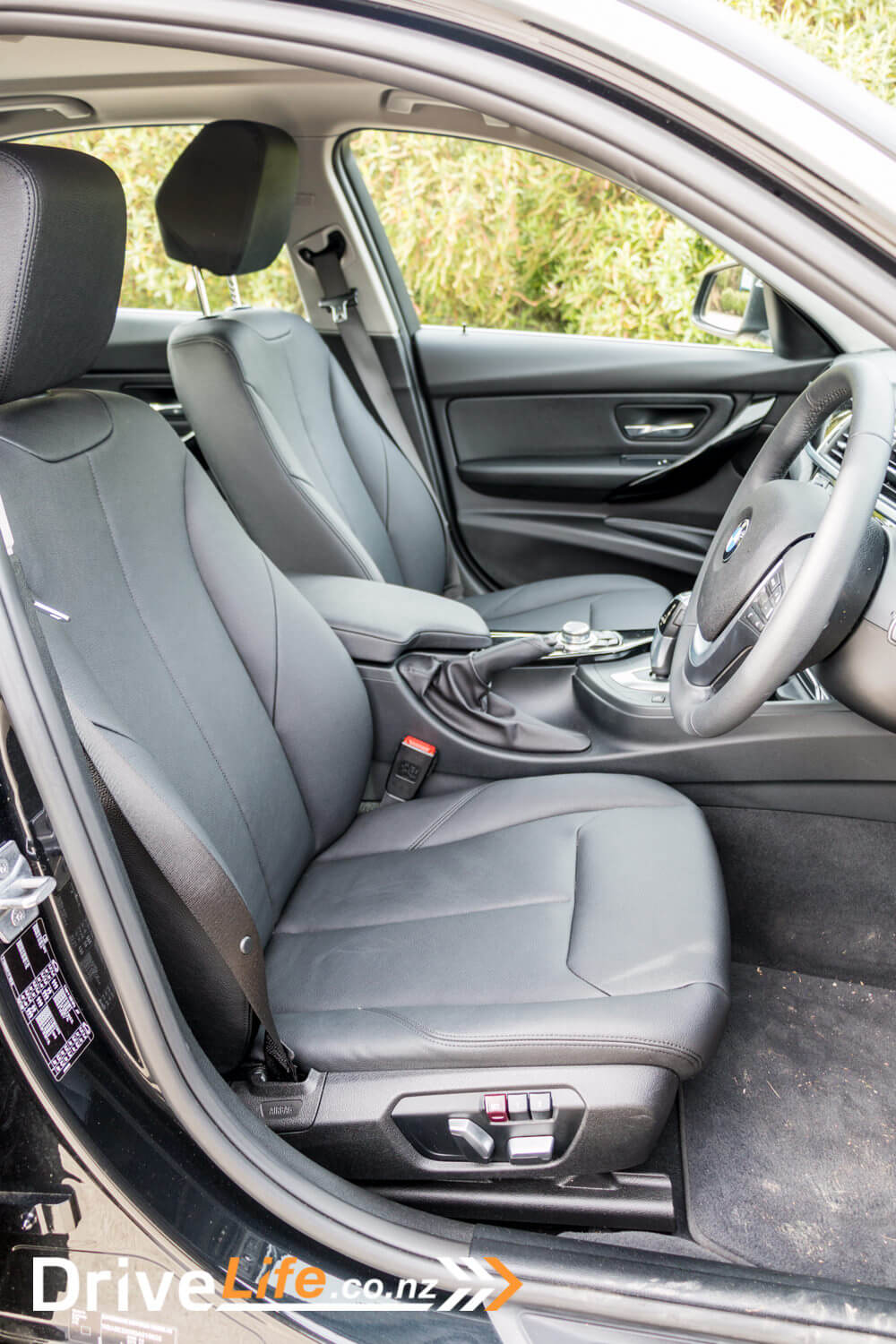
Getting back into the car we noted a couple of other things we weren’t keen on. One is the centre armrest, which can slide backwards and forwards by about 10cm, but if you forget and lean on it to adjust position in your seat it gives you a bit of a scare as it shoot backwards with a clunk. The other is that every time you set off, the front seatbelts tighten, but they do it with a bit of a jerk and it’s disconcerting, and apparently can be a little bit painful if you have boobs.
We used the satnav to guide us the rest of the way, and it works very well. Directions are clear and pretty verbose – in a good way, and a diagram of the next turn or junction comes up on the display in the instrument cluster. It also updates live to take account of traffic congestion, road closures etc.
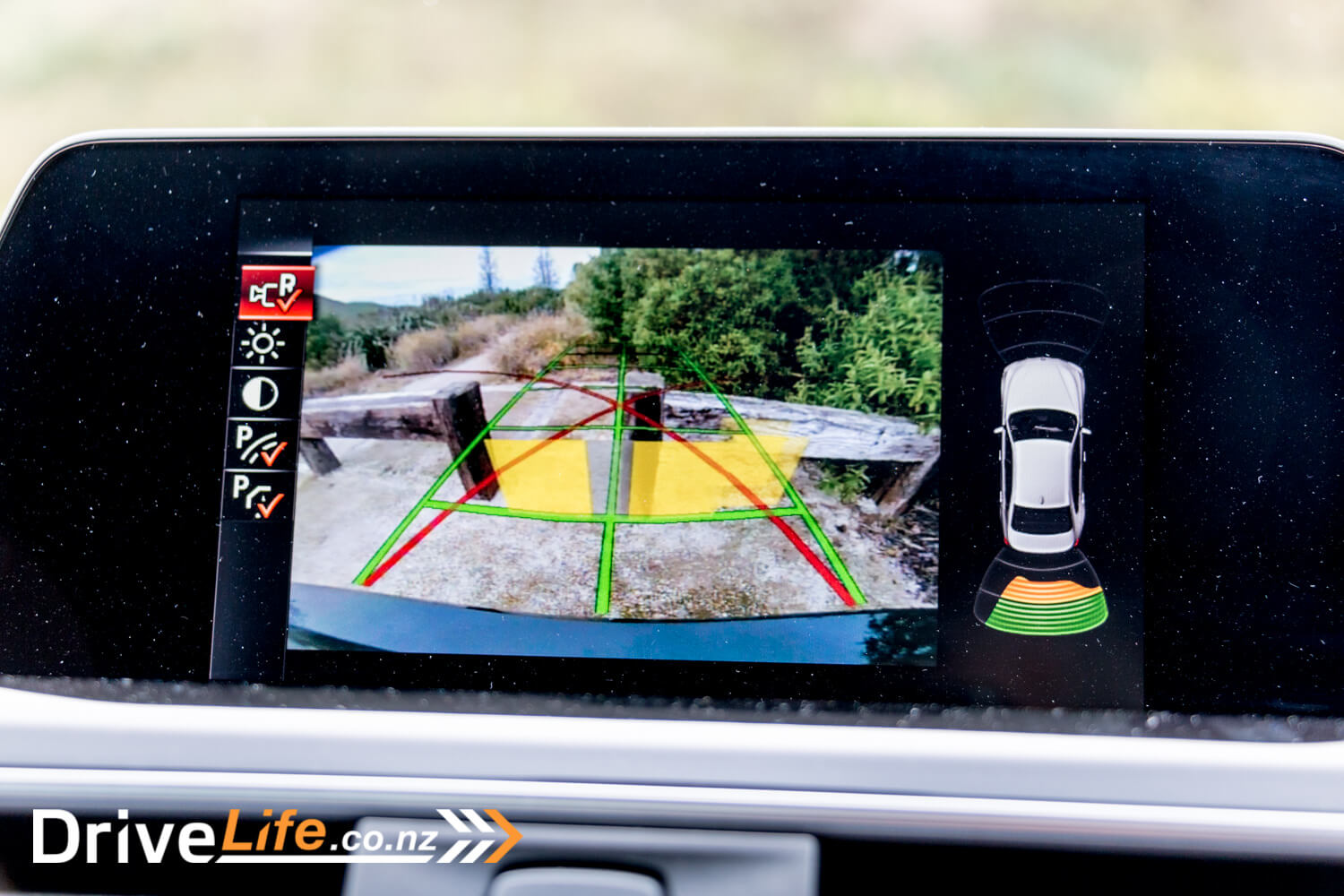
The 6-speaker stereo is very good, with decent bass and good sound quality. It also paired with my phone via Bluetooth with no issues, and re-connected quickly and flawlessly. I also tested out the BMW Connected Drive app, which pairs with the car from your phone and allows you to perform certain functions remotely, such as locating the car, flashing the lights, beeping the horn, turning on the aircon, either immediately or at a specified time, and programming the satnav. Clever stuff. The stereo screen also displays the reversing camera and parking sensor display, which are very good, with a clear camera picture and very detailed overlays to show what sensors have picked up obstacles.
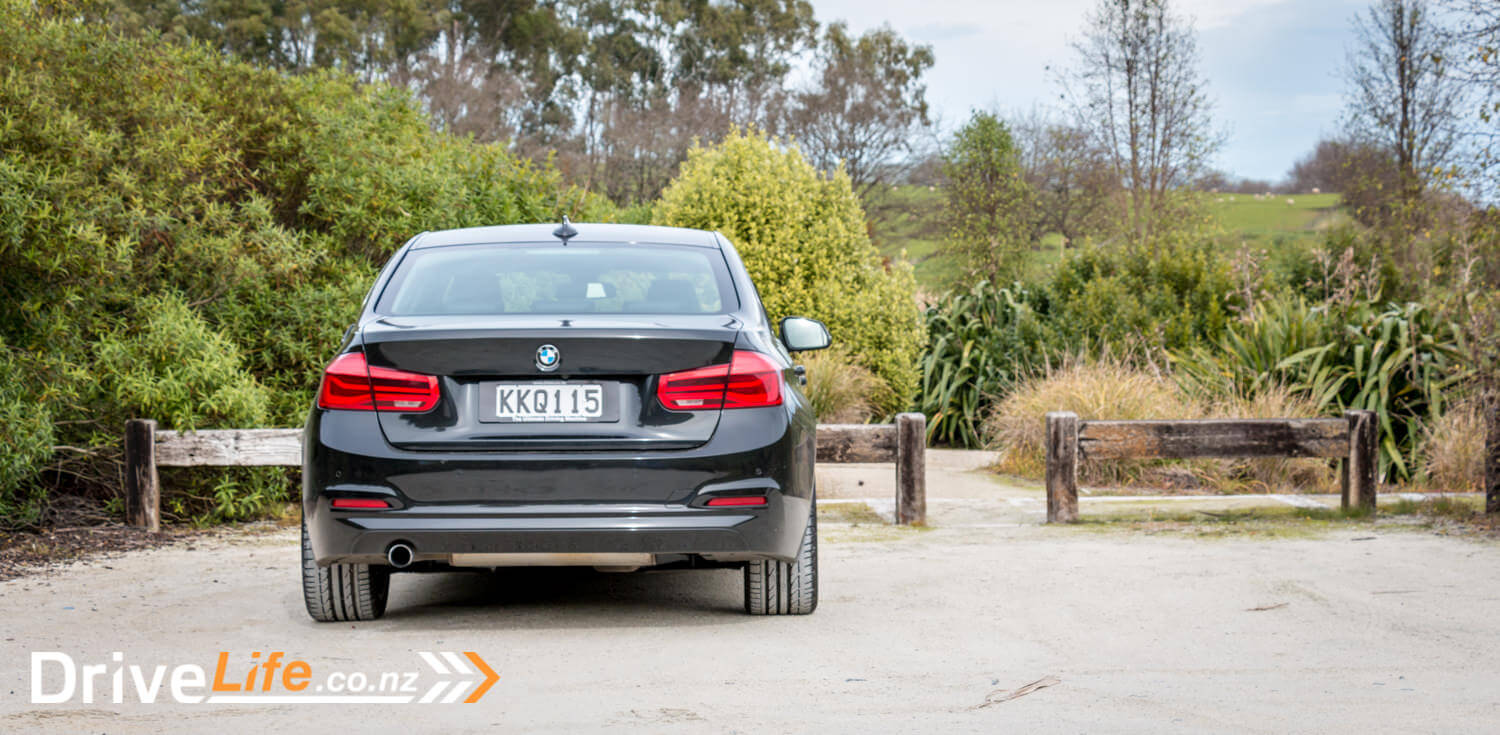
The Competition
There’s quite a lot of competition in this segment, and there are some pretty high spec cars available for similar money.
| Brand / Model | Engine | Power | Fuel L/100km | 0-100km/h | Price Highest to Lowest |
| Infiniti Q50 | 2.0l 4 cylinder turbo | 155kW/350Nm | 7.3 | 7.2s | $69,990 |
| Jaguar XE | 2.0l 4 cylinder turbo | 147kW/340Nm | 6.3 | 7.1s | $67,900 |
| Mercedes Benz CLA Sedan | 1.6l 4 cylinder turbo | 115kW/250Nm | 5.6 | 7.9s | $67,200 |
| Skoda Superb TSI Sportline | 2.0l 4 cylinder turbo | 206kW/350Nm | 7.1 | 5.8s | $66,900 |
| Honda Accord V6 NT Sedan | 3.5l 6 cylinder | 206kW/339Nm | 9.3 | N/A | $60,000 |
| BMW 318i | 1.5l 3 cylinder turbo | 100kW/200Nm | 5.4 | 9.1s | $59,900 |
| Hyundai Sonata Elite Limited | 2.0l 4 cylinder turbo | 180kW/350Nm | 9.2 | N/A | $55,990 |
| Mazda6 Limited Sedan | 2.5l 4 cylinder | 138kW/250Nm | 6.6 | N/A | $55.995 |
| VW Passat R-Line | 1.8l 4 cylinder turbo | 132kW/250Nm | 5.8 | 7.9s | $55,490 |
| Toyota Aurion Sportivo ZR6 | 3.5l 6 cylinder | 200kW/336Nm | 9.3 | 7.1s | $54,190 |
| Kia Optima Turbo GT | 2.0l 4 cylinder turbo | 180kW/350Nm | 8.5 | N/A | $53,990 |
| Nissan Altima Ti | 2.5l 4 clyinder | 127kW/230Nm | 7.5 | N/A | $53,290 |
| Hyundai i40 Elite | 1.7l 4 cylinder turbo | 104kW/340Nm | 5.1 | N/A | $51,990 |
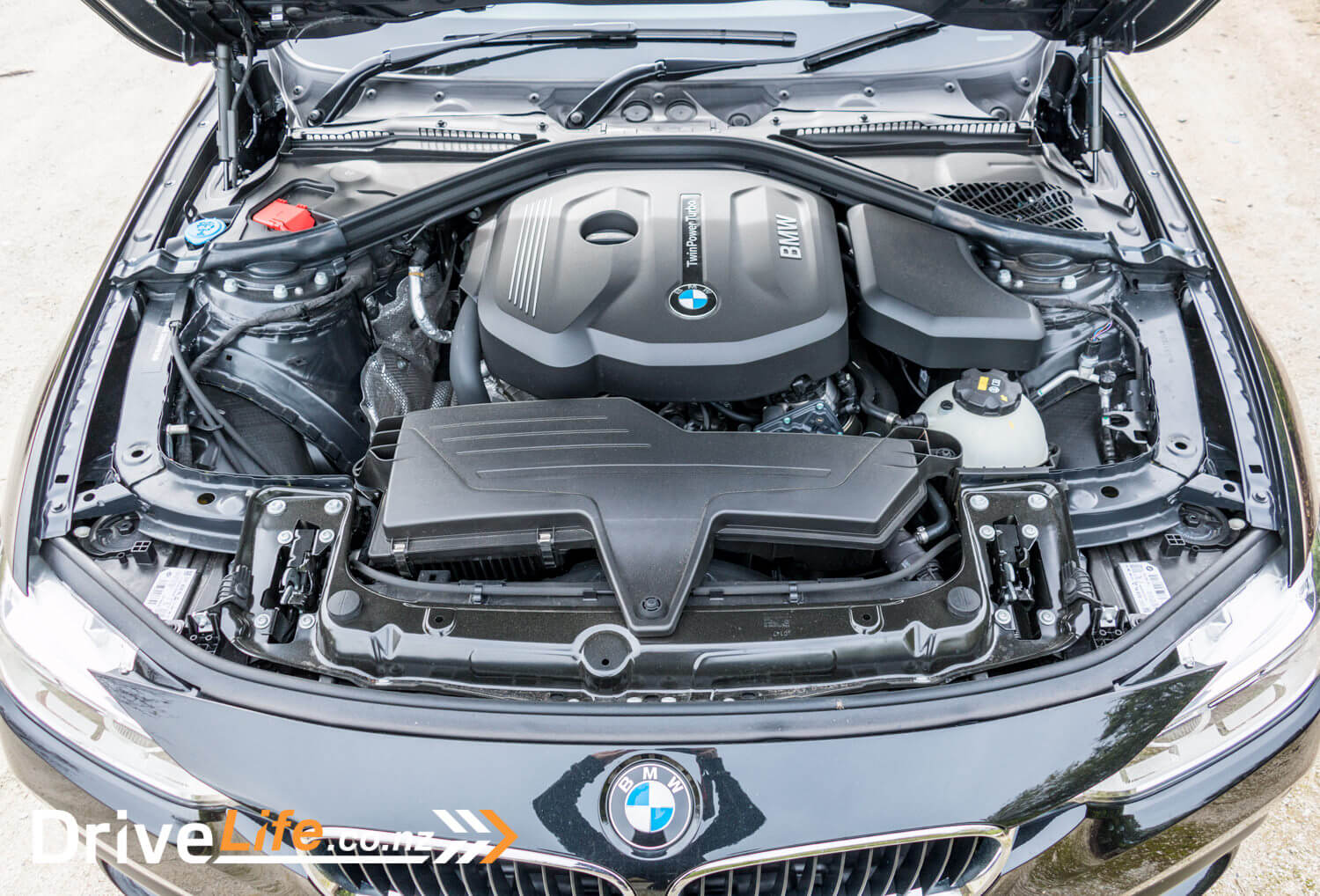
The pros and cons
| Pros | Cons |
|
|
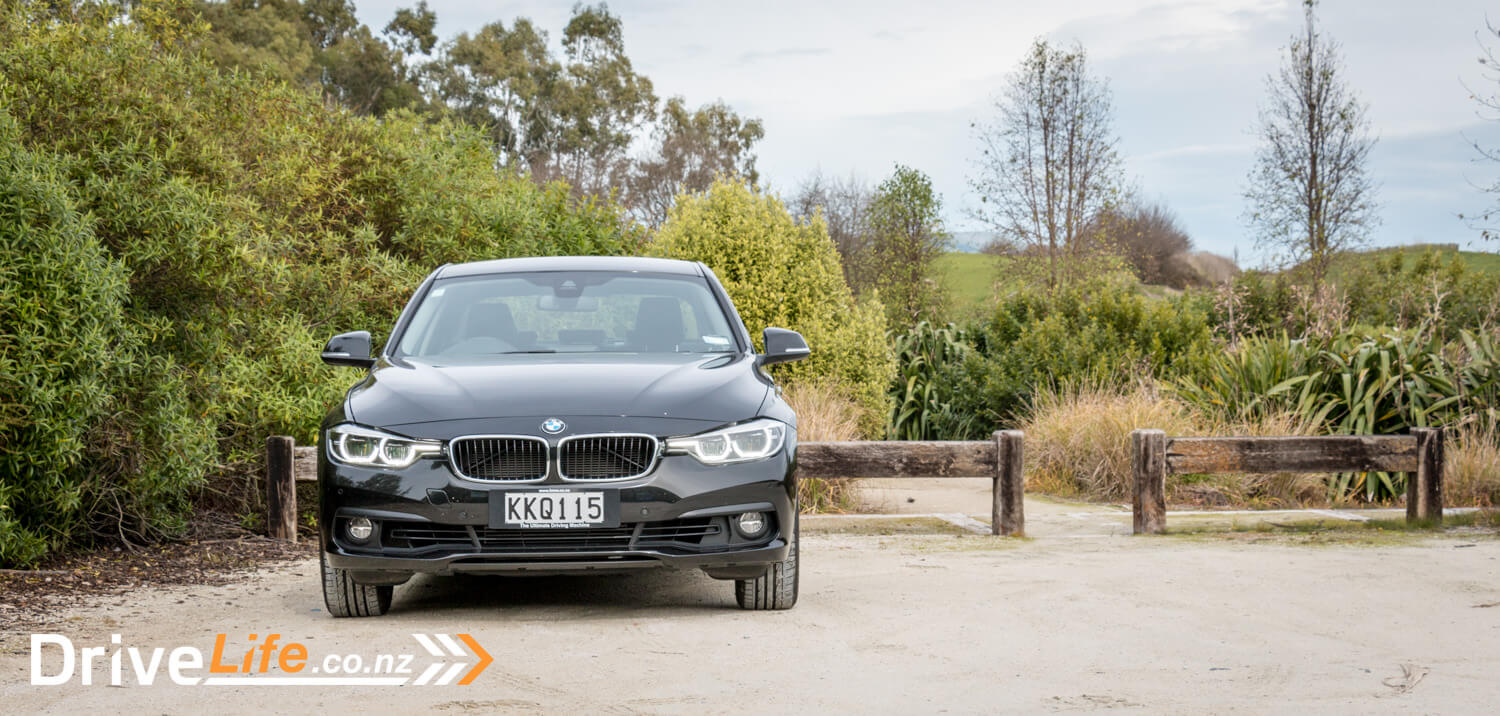
What we think
I covered about 750km in the 318i over the week I had it, and I really enjoyed it. It may be the entry-level car but it’s very much a BMW, with the rear-wheel-drive chassis, excellent steering and handling, build quality and clever technology.
Like all BMWs it gives you the feeling that every feature of the car has been thought out properly, obsessed over, and made as good as it can be. It has a solid, quality feel to it and it’s definitely a car that I would be happy to drive every day.
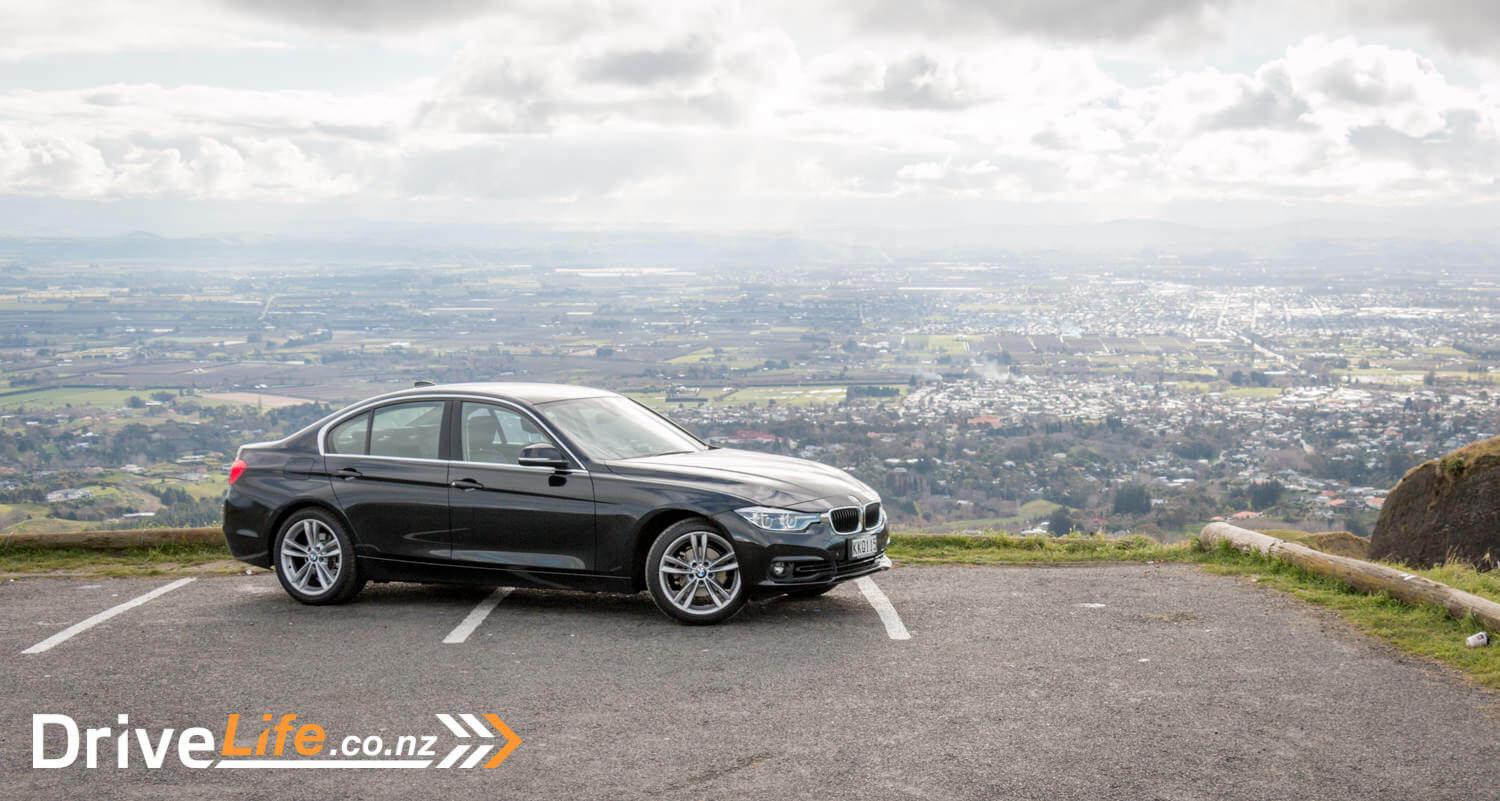
Rating – Chevron rating 4 out of 5

| Vehicle Type | Mid-sized 5 door rear wheel drive sedan |
| Starting Price | $59.900 |
| Tested Price | $59.900 |
| Engine | 1499cc TwinPower 3 cylinder with twin-scroll turbo |
| Transmission | 8 speed Steptronic automatic |
| 0 – 100 kph | 9.1 seconds |
| Kerb Weight | 1475kg |
| Length x Width x Height | 4633 x 1811 x 1429mm |
| Cargo Capacity | 480 Litres |
| Fuel Tank | 60 litres |
| Fuel Efficiency | Advertised Spec – Combined – 5.4L / 100km
Real World Test – Combined – 7.0L / 100km |
| ANCAP Safety Ratings | 5 stars |
| Warranty | Five year warranty, three years’ servicing and five years’ roadside assist |
